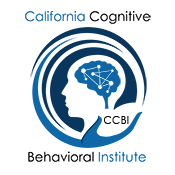Cognitive Behavioral Therapy
What is CBT?
It is a way of talking about:
- how you think about yourself, the world and other people
- how what you do affects your thoughts and feelings.
CBT can help you to change how you think (‘Cognitive’) and what you do (‘Behavior’). These changes can help you to feel better. Unlike some of the other talking treatments, it focuses on the ‘here and now’ problems and difficulties. Instead of focusing on the causes of your distress or symptoms in the past, it looks for ways to improve your state of mind now.
When does CBT help?
How does it work?
- A Situation – a problem, event or difficult situation. From this can follow
- Thoughts
- Emotions
- Physical feelings
- Actions
Each of these areas can affect the others. How you think about a problem can affect how you feel physically and emotionally.
All these areas of life can connect like this: What happens in one of these areas can affect all the others.
|
Unhelpful
|
Helpful
|
|
| Thoughts: | He/she ignored me – they don’t like me | He/she looks a bit wrapped up in themselves – I wonder if there’s something wrong? |
| Emotional: Feelings |
Low, sad and rejected | Concerned for the other person, positive |
| Physical: | Stomach cramps, low energy, feel sick | None – feel comfortable |
| Action: | Go home and avoid them | Get in touch to make sure they’re OK |
- having a number of uncomfortable feelings
- behaving in a way that makes you feel worse.
If you go home feeling depressed, you’ll probably brood on what has happened and feel worse. If you get in touch with the other person, there’s a good chance you’ll feel better about yourself.
CBT can help you to break this vicious circle of altered thinking, feelings and behaviour. When you see the parts of the sequence clearly, you can change them – and so change the way you feel. CBT aims to get you to a point where you can ‘do it yourself’, and work out your own ways of tackling these problems.
What does CBT involve?
You can do CBT individually or with a group of people, or even a self-help book or computer programme.
- You will usually meet with a counselor for between 5 and 20, weekly, or monthly sessions. Each session will last between 60 minutes.
- In the first 2-4 sessions, the therapist will check that you can use this sort of treatment and you will check that you feel comfortable with it.
- The counselor/therapist will also ask you questions about your past life and background. Although CBT concentrates on the here and now, at times you may need to talk about the past to understand how it is affecting you now.
- You decide what you want to deal with in the short, medium and long term.
- You and the therapist/counselor will usually start by agreeing on what to discuss that day.
The work
- With the therapist, you break each problem down into its separate parts, as in the example above. To help this process, your therapist may ask you to keep a diary. This will help you to identify your individual patterns of thoughts, emotions, bodily feelings and actions.
- Together you will look at your thoughts, feelings and behaviors to work out:
- if they are unrealistic or unhelpful
- how they affect each other, and you.
- The counselor/therapist will then help you to work out how to change unhelpful thoughts and behaviors.
- It’s easy to talk about doing something, much harder to actually do it. So, after you have identified what you can change, your therapist/counselor will recommend ‘homework’ – you practice these changes in your everyday life. Depending on the situation, you might start to:
- question a self-critical or upsetting thought and replace it with a more helpful (and more realistic) one that you have developed in CBT
- recognize that you are about to do something that will make you feel worse and, instead, do something more helpful.
- At each meeting you discuss how you’ve got on since the last session. Your therapist can help with suggestions if any of the tasks seem too hard or don’t seem to be helping.
- They will not ask you to do things you don’t want to do – you decide the pace of the treatment and what you will and won’t try. The strength of CBT is that you can continue to practice and develop your skills even after the sessions have finished. This makes it less likely that your symptoms or problems will return.
How effective is CBT?
- It is one of the most effective treatments for conditions where anxiety or depression is the main problem.
- It is the most effective psychological treatment for moderate and severe depression.
- It is as effective as antidepressants for many types of depression.
What other treatments are there and how do they compare?
CBT is used in many conditions, so it isn’t possible to list them all in this leaflet. We will look at alternatives to the most common problems – anxiety and depression.
- CBT isn’t for everyone. Another type of talking treatment may work better for you.
- CBT works as well as antidepressants for many forms of depression. It may be slightly better than antidepressants in helping anxiety.
- For severe depression, CBT should be used with antidepressant medication. When you are very low, you may find it hard to change the way you think until the antidepressants have started to make you feel better.
- Tranquillisers should not be used as a long term treatment for anxiety. CBT is a better option.
Problems with CBT
- CBT is not a quick fix. A therapist is like a personal trainer that advises and encourages – but cannot ‘do’ it for you.
- If you are feeling low, it can be difficult to concentrate and get motivated.
- To overcome anxiety, you need to confront it. This may lead you to feel more anxious for a short time.
- A good therapist will pace your sessions. You decide what you do together, so you stay in control.
How long will it last?
What if the symptoms come back?
So what impact would CBT have on my life?
How can I get CBT?
- Speak to California Cognitive Behavioral Institute’s CEO – Dr. Kathie Mathis, Psy.D and get going on a whole new adventure in helping overcome issues that have held you back.
What will happen if I don’t have CBT?
| Change: your thoughts and actions
Homework: practice makes perfect Action: don’t just talk, do! Need: pinpoint the problem Goals: move towards them Evidence: shows CBT can work |
View: events from another angle
I can do it: self-help approach Experience: test out your beliefs Write it down: to remember progress |

